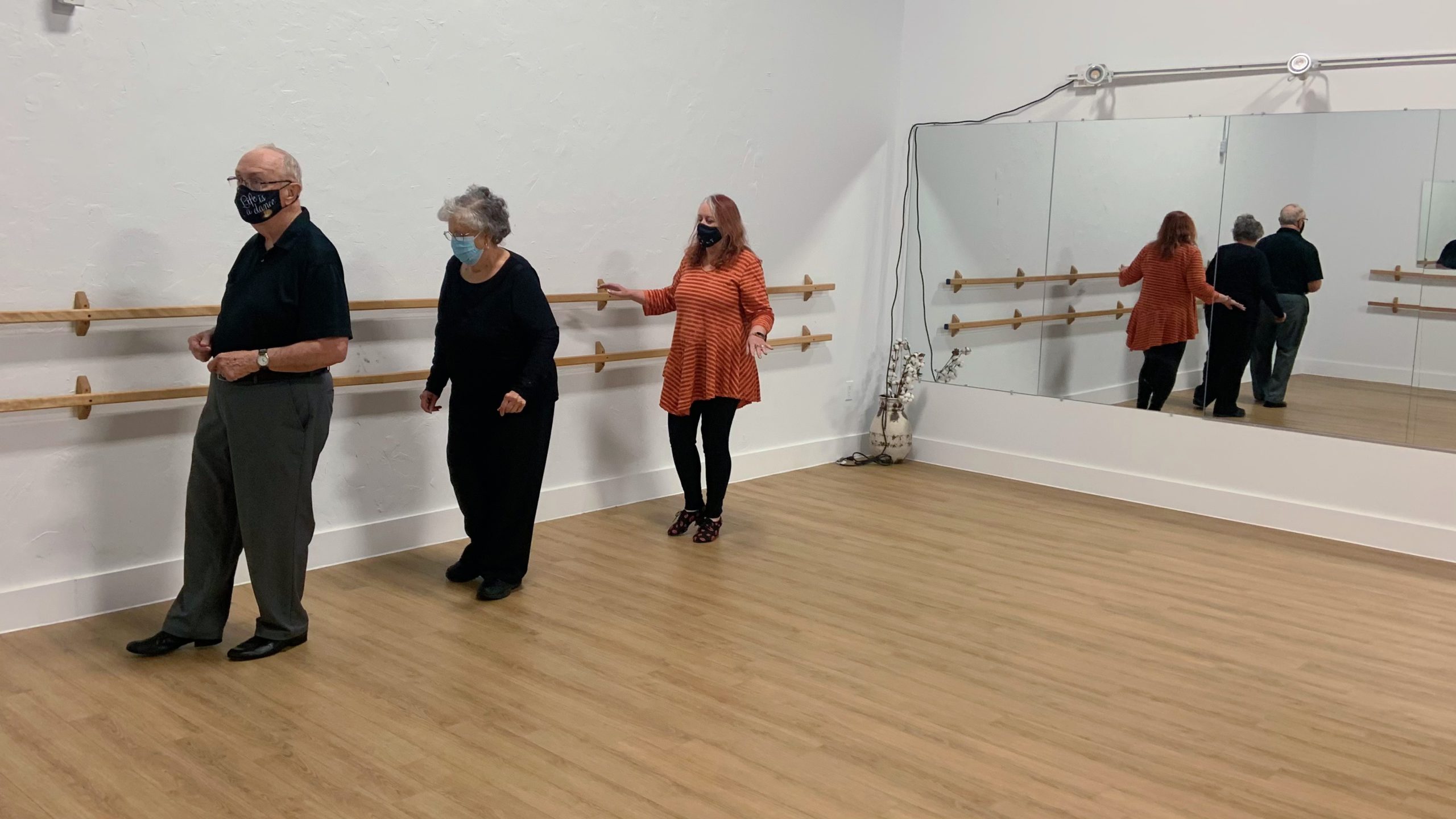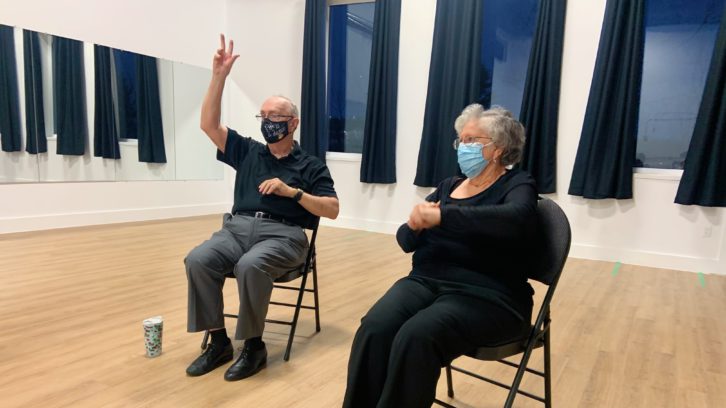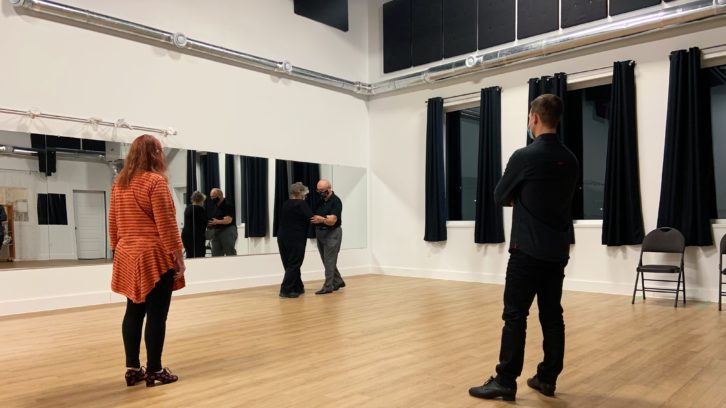‘Life is a dance!’ so this Halifax studio is open to all
At DanceABLE, instructors emphasize the therapeutic aspects of dancing

caption
Instructor Cheryl Ewing shows students John and Donna McDermott some choreography at a DanceABLE class at Edgett Dance & Wellness in Halifax.For John and Donna McDermott, Wednesday is date night. They get dressed up and head out for dinner and dancing.
Every week, the McDermotts attend DanceABLE, an hour-long class in Halifax for dancers with limited mobility and progressive diseases. Edgett Dance & Wellness has been offering the class since September.
The McDermotts, both 78, dance from their chairs for the first few songs to ensure their bodies are warmed up. John wears a mask that proclaims “Life is a dance!”
“We start with something to take us out of the world,” says dance instructor Cheryl Ewing.
Ewing leads them in choreography to the song I’m Gonna Wash That Man Right Outa My Hair.
Next, they head over to the parallel bars, where they dance to reggae music. They do a tango, and then finish off with some ballroom dancing. Ewing leads them in a cool-down sitting dance based on the four elements.
“Relax into it,” says Ewing. “Just breathe.”

caption
At DanceABLE, students learn dances adapted for a range of ages, abilities and bodies.It’s the kind of date night the McDermotts thought they would never get to experience again.
Donna was a dancer when she was younger, but after two surgeries on her left knee, one on her right, major back surgery and complications, she thought dancing would be impossible.
“We always danced,” says Donna. “It was very hard for me to go with John and sit and listen to the music that I enjoyed and not be able to do anything with it.”
Then they heard about DanceABLE.
“As my leg got better this year and they talked about having a class for people with mobility issues, I wanted to try it,” says Donna.
Her husband considers it “good for the soul.”
“We get a chance to enjoy our music and do some dancing,” says John, who has danced competitively since he was 49.

caption
Instructors at Edgett Dance & Wellness focus on the creative and therapeutic aspects of dance.The benefits of dancing
Edgett Dance & Wellness is owned by Brenton Mitchell, an occupational therapist. He started the studio because he wanted to combine his love of dancing with his therapy background.
Mitchell and Ewing started DanceABLE so that people with limited mobility could enjoy the physical and cognitive benefits associated with dancing.
“You’re thinking about the music, you’re thinking about the steps, you’re using your entire brain,” Ewing says. “So it’s really good for anyone having cognitive issues or memory issues.”
Studies have shown that dancing can slow down or even reverse signs of aging. Dancing has also been shown to improve the effects of brain conditions like Parkinson’s disease, act as a mood booster, have a positive impact on depression, and reduce the chance of death from cardiovascular disease.
Mitchell works with people who have had brain injuries and spinal cord injuries. This class is specifically catered toward people who may think dancing isn’t an option for them.
“It gives them an opportunity in a safe environment with a therapeutic component,” says Mitchell.
Trying new things
DanceABLE makes dance accessible to people with a range of experiences, abilities and ages.
Paul Tingley, 50, is a Paralympic sailor from Halifax. Tingley and his partner, Natalie MacIsaac, 45, attend DanceABLE most weeks.
“It’s a way to connect,” says MacIsaac. “It’s a way to find movement together.”
They were looking to try something new, and a friend suggested DanceABLE.
“Trying new things is really important no matter what,” says MacIsaac, who used to dance when she was younger. “It’s important to have inclusive spaces for everyone to do that.”
Tingley, who is paralyzed from the waist down, agrees. “We are being creative and sometimes silly,” he said in an email to The Signal. “A little bit of rhythm makes it a fun experience.”
Edgett Dance & Wellness currently offers DanceABLE on Wednesday evenings, and they are hoping to add an afternoon class soon.
“All bodies move differently,” says MacIsaac. “What is great about it is that it’s for everyone.”
About the author
Darrell Roberts
Darrell Roberts is a student journalist from St. John's. He enjoys reading and writing about the latest in culture and politics.

M
Michele Roberts